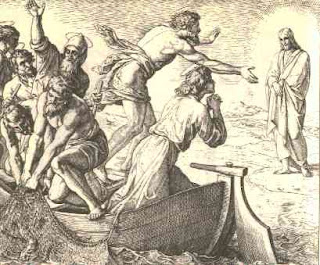The Dead Sea Scroll - Session Five
The Dead Sea Scrolls – Session Five
Further Adventures in Reading, Interpreting, and Re-writing the Bible
In a previous session we explored how the Community read biblical texts, in particular the Prophets and the Psalms, in light of their own experience. The Biblical commentaries, or pesharim, offered an interpretation of a given text that read the Community’s story into the biblical story as the fulfilment of biblical prophecy. In this way, it appears the Community saw itself as the culmination of the story of Israel.
However, this was not their only approach to reading Scripture. Found amongst the Dead Sea Scrolls are several previously unknown examples of re-written Scripture (e.g., the Genesis Apocryphon). In addition, they seemed to have treasured copies of texts that have been preserved in later editions and have come down to us largely through ecclesiastical traditions (such as 1 Enoch, which the Ethiopic Church considered canonical). Most of these texts were probably not written by the Community, and thus are generally not considered sectarian texts. They lack the specific language and terminology of the sect, although they often share a mindset that the Community would have found appealing (a solar calendar, a certain eschatological or apocalyptic world-view, interest in angels and merkabah mysticism). These texts were read and copied until well into the latter days the Community’s existence with some texts dated to the first century AD (although most are deemed to have been originally written before 200 BC).
Some key non-sectarian texts that were clearly valued by the Community include The Genesis Apocryphon, The Book of Jubilees, and 1 Enoch. The concept of re-writing the Bible or expanding it was not uncommon during this period, nor was practice of pseudepigraphy, that is, writing in the name of another person. It is sometimes argued that some of Paul’s letters do not come from Paul, but from a later “Pauline school”. Found amonsgt the Scrolls are various Testaments of Jewish patriarchs, purportedly in their own words, although clearly written centuries after they lived. The Genesis Apocryphon has a “testamentary” feel to it as it contains a retelling of a portion of Genesis in the first-person voices of Lamech, Noah, and Abraham, before it switches to third-person narration. The Genesis Apocryphon, which we shall look at in more detail, probably contained other stories, perhaps go back to Creation, but the early columns are severely damaged and fragmentary, and largely impervious to re-construction.
Those who participated in the Apocalyptic course will be interested to notice that 1 Enoch and portions of the Book of Watchers are preserved. The Community seemed to have an active interest in the story from Genesis in which the Sons of God (the angels) mate with the daughters of men and give birth to the giants. This may dovetail with Community’s interest in their belief in the presence of angels and demons in their midst.
While the Community was interested in stories from patriarchal tradition, especially Enoch and Noah (which might be considered an “alternate” cosmological strand in early Judasim, sometimes distinct from the Sinaitic, Mosaic strand), they also were interested in the Sinai tradition and Moses as well, as some Moses Apocrypha, Words of Moses, and a sermon on Exodus have also survived.
Some questions for reflection:
1. Why did these re-written texts appeal to the community?
2. What did the Community find in these texts that they could not find in what became the canonical scriptures?
3. What does the existence of these texts tell us about canon formation? Which texts were authoritative, and in what way?
4. Choose one text short text that appeals to you from Section G of Vermes and be prepared to share why it interests you, what do you think made it important to the people of the Community, and whether you think it is a sectarian text or non-sectarian text.
5. Genesis Apocryphon:
What might be the significance of telling the story of the patriarchs in 1st person rather than 3rd person?
Why do you think the text shifts from 1st to 3rd person during the story of Abraham?
Can you think of anywhere in the Bible where such a shift occurs?
Which stories to you recognize from your own reading of Genesis?
Which stories are expanded, and for what purpose?




Comments